
Do you have a question about the Ford 2006 E-150 and is the answer not in the manual?
| Brand | Ford |
|---|---|
| Model | 2006 E-150 |
| Category | Automobile |
| Language | English |
Explains warning lights and chimes used to alert drivers to vehicle conditions.
Explains the function and conditions for the brake system warning light.
Describes the ABS warning light and when the system needs service.
Indicates if the airbag system is functioning correctly upon ignition.
Provides information on the vehicle's primary gauges.
Explains how to maintain speed without using the accelerator pedal.
Step-by-step guide to setting and using speed control.
Press RES to automatically return to the previously set speed.
Methods for setting a higher speed using speed control.
Methods for reducing speed using speed control.
Two ways to turn off the speed control: brake pedal or OFF button.
Provides information and notes on vehicle seating.
Contains critical safety information regarding restraints.
Provides essential safety advice for using restraints.
Describes the vehicle's lap and shoulder belt system.
Explains the automatic pre-locked mode for shoulder belts.
Describes the safety belt pretensioner device and its function.
Explains the safety belt warning light and chime system.
Describes the BeltMinder feature for supplemental safety belt reminders.
Explains the SRS airbag system and its precautions.
Offers further critical safety advice regarding airbag system usage.
Reiterates child safety and airbag precautions.
Explains the function and operation of the passenger airbag ON/OFF switch.
Outlines criteria for when passenger airbag deactivation is permissible.
Lists NHTSA criteria for deactivating passenger airbags for infants and children.
Lists NHTSA criteria for deactivating passenger airbags for infants and children.
Lists Transport Canada criteria for deactivating passenger airbags.
Lists Transport Canada criteria for deactivating passenger airbags.
Provides comprehensive guidance on child safety restraints.
Offers critical safety advice for using child restraints.
Offers critical safety advice for using child restraints.
Guidance on using safety belts for children who have outgrown safety seats.
Explains when children need to use booster seats.
Defines the criteria for using booster seats.
Describes backless and high-back belt-positioning booster seats.
Emphasizes the necessity of shoulder belts with booster seats.
General instructions for using booster seats and safety belts.
Provides detailed instructions for installing child safety seats.
Guidance on selecting and installing child safety seats.
Steps for installing child safety seats correctly.
Steps for installing child safety seats correctly.
Procedure for installing child seats using vehicle lap and shoulder belts.
Procedure for installing child seats using vehicle lap and shoulder belts.
Instructions for attaching child safety seats using tether straps.
Instructions for attaching child safety seats using tether straps.
Instructions for using LATCH system for child seat installation.
Identifies seating positions with LATCH anchors.
Identifies seating positions with LATCH anchors.
Instructions for properly installing child seats with LATCH attachments.
Lists essential precautions to reduce rollover risk.
Provides essential guidance on tire inspection and inflation.
Provides detailed instructions for checking and inflating tires.
States requirements for using correct replacement tires and wheels.
Guides on proper vehicle loading within design rating capabilities.
Defines payload and how to find maximum payload on the tire label.
Explains how vehicle load capacity is limited by volume or weight.
Includes weight of cargo and optional equipment, and trailer tongue load.
Defines axle weight limits and their importance for vehicle handling.
Defines Gross Vehicle Weight as curb weight plus cargo and passengers.
Defines maximum allowable weight of a fully loaded vehicle.
Defines combined vehicle and trailer weight limits.
Specifies the highest possible weight of a fully loaded trailer a vehicle can tow.
Provides a step-by-step calculation for determining vehicle load limit.
Provides examples for calculating cargo and luggage load capacity.
Guides on trailer towing capabilities based on engine and axle ratio.
Explains how to calculate maximum trailer weight for cutaway vehicles.
Provides essential guidelines for driving with a trailer attached.
Provides guidelines for driving with a trailer attached.
Details the ignition positions and preparing to start the vehicle.
Step-by-step instructions for starting the engine.
Provides precautions to avoid the dangerous effects of carbon monoxide.
Provides information on brake noise, wear, and system warnings.
Explains the function of the ABS system and its normal characteristics.
Explains how to use ABS effectively during hard braking.
Instructions for setting and releasing the parking brake.
Provides precautions to prevent damage to the power steering system.
Offers safety guidance, especially regarding rollover risk.
Warns about higher rollover rates for utility vehicles and risk reduction.
Discusses how vehicle stability and handling are affected by load and center of gravity.
Discusses how vehicle stability and handling are affected by load and center of gravity.
Provides guidance on handling emergency driving situations.
Explains the AdvanceTrac with RSC system for stability and traction enhancement.
Provides warnings about aggressive driving and system events.
Explains the brake-shift interlock feature for automatic transmissions.
Describes the gearshift positions for the 4-speed automatic transmission.
Normal driving position for fuel economy; explains Tow/Haul OFF.
Explains how Tow/Haul feature improves transmission operation when towing.
Explains how Tow/Haul feature improves transmission operation when towing.
Describes gearshift positions for the 5-speed automatic transmission.
Provides guidance on safely returning to the road after driving off.
Details Ford's complimentary roadside assistance program.
Explains the availability and coverage of roadside assistance services.
Provides contact information for roadside assistance in the US and Canada.
Explains fuses, how to identify blown fuses, and replacement procedures.
Provides critical instructions for changing a flat tire safely.
Provides critical instructions for changing a flat tire safely.
Provides critical instructions for changing a tire safely.
Step-by-step instructions for replacing a tire.
Provides critical instructions for changing a tire safely.
Step-by-step instructions for replacing a flat tire.
Step-by-step instructions for replacing a flat tire.
Provides critical instructions for jump starting the vehicle safely.
Step-by-step instructions for connecting jumper cables correctly.
Step-by-step instructions for connecting jumper cables correctly.
Procedure for starting the engine of disabled and booster vehicles.
Step-by-step instructions for removing jumper cables in reverse order.
Step-by-step instructions for removing jumper cables in reverse order.
Details how to obtain service at dealerships and customer support.
Explains the U.S. Dispute Settlement Board for warranty disputes.
Explains the U.S. Dispute Settlement Board for warranty disputes.
Explains the CAMVAP program for Canadian warranty disputes.
Instructs on reporting safety defects to NHTSA and Ford.
Offers guidance on servicing the vehicle and highlighting DIY items.
Provides essential safety precautions to follow during vehicle service.
Provides a diagram and list of engine compartment components.
Provides guidance on checking and maintaining engine oil levels.
Step-by-step instructions for checking the engine oil level.
Step-by-step instructions for checking the engine oil level.
Step-by-step instructions for adding engine oil to the engine.
Information on the vehicle's maintenance-free battery.
Provides essential safety precautions when working with batteries.
Provides guidance on checking and maintaining engine coolant levels.
Step-by-step instructions for checking engine coolant concentration and level.
Step-by-step instructions for checking engine coolant concentration and level.
Instructions for adding engine coolant and the correct mixture.
Instructions for adding engine coolant and the correct mixture.
Explains the fail-safe cooling feature and its operation.
Provides critical safety information regarding automotive fuels.
Offers essential safety advice for handling automotive fuels.
Offers essential safety advice for handling automotive fuels.
Provides critical safety instructions and guidelines for refueling.
Recommends using unleaded fuel and warns against certain additives.
Provides guidance on measuring and improving fuel economy.
Provides simple calculations for determining fuel economy.
Offers advice on driving habits to improve fuel economy.
Describes emission control components and proper maintenance to ensure compliance.
Explains the OBD-II system and its role in monitoring emission control.
Explains the OBD-II system and its role in monitoring emission control.
Provides guidance on checking and adding power steering fluid.
Explains how brake fluid levels change with brake wear and replacement.
Provides guidance on checking and maintaining automatic transmission fluid.
Step-by-step instructions for checking automatic transmission fluid level.
Step-by-step instructions for checking automatic transmission fluid level.
Instructions for adding automatic transmission fluid and potential overfill issues.
Provides information on changing the air filter element.
Step-by-step instructions for changing the air filter element.
Provides a table of fluid refill capacities for various vehicle components.
Provides a table of fluid refill capacities for various vehicle components.
Lists lubricant specifications for various vehicle components.
Lists lubricant specifications for various vehicle components.
Provides engine specifications for 4.6L V8, 5.4L V8, and 6.8L V10 engines.
Describes the quality and warranty of Genuine Ford Accessories.
Entry in the index for 'Airbag Supplemental Restraint System'.
Entry in the index for 'Anti-lock Brakes (ABS)'.
Entry in the index for 'Lubricant Specifications'.
Entry in the index for 'Speed Control'.
Entry in the index for 'Starting Your Vehicle'.
Entry in the index for 'Tires'.
Entry in the index for 'Towing'.
Entry in the index for 'Transmission'.
Entry in the index for 'Vehicle Loading'.
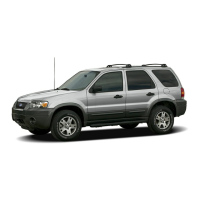
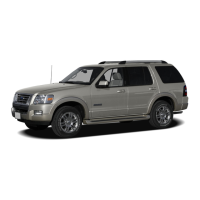

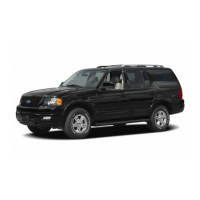
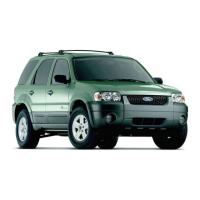
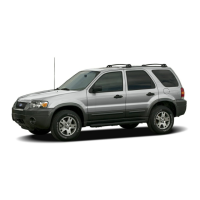
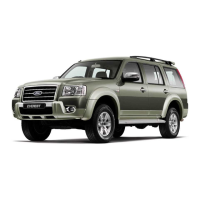
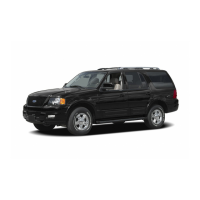
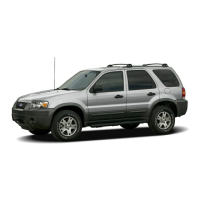

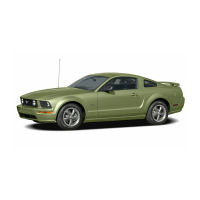
